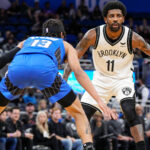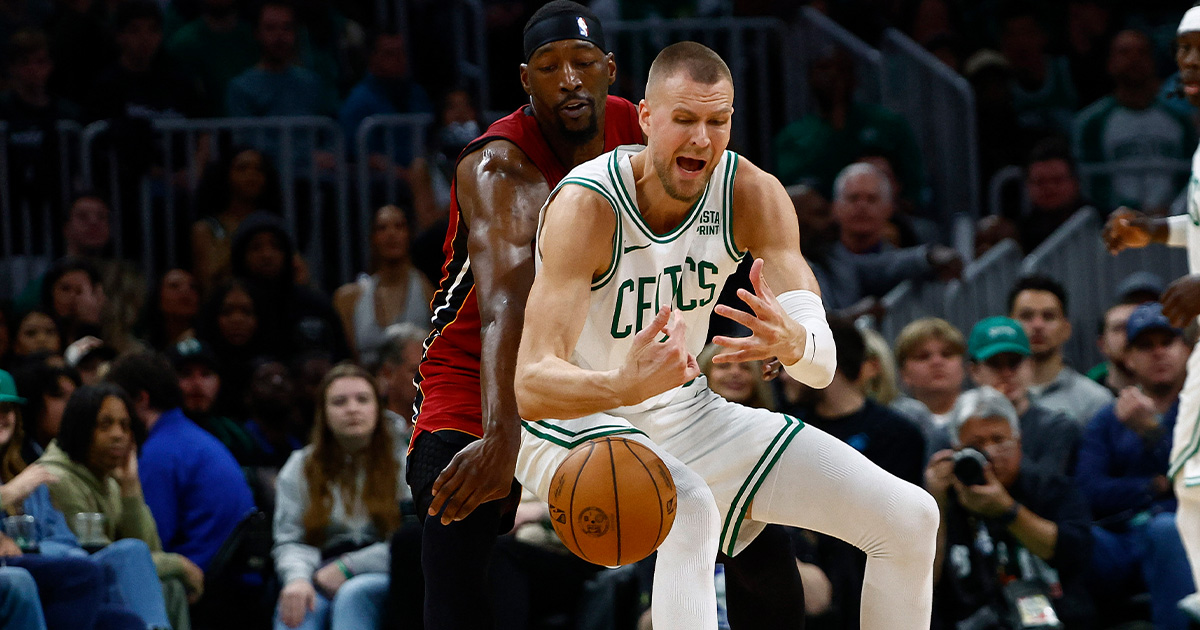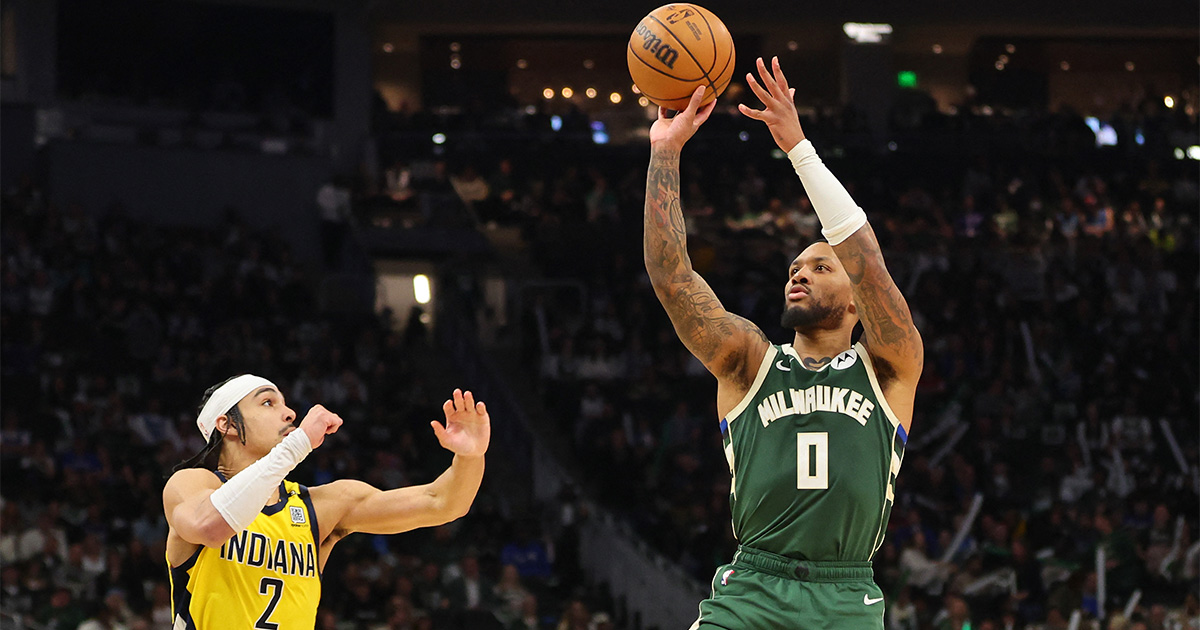For the first time in the one-and-done era, each of the top 4 draft prospects will be playing for different teams that are seeded No. 3 or better in the NCAA Tournament. Chet Holmgren of Gonzaga (the top-seeded team in the West region and the overall No. 1), Paolo Banchero of Duke (No. 2 in the West), Jabari Smith of Auburn (No. 2 in the Midwest), and Jaden Ivey of Purdue (No. 3 in the East) are all heading to THE tournament with high expectations to make it to the second week. (Note: The top 4 picks in 2014 all played for top 3 teams, but Andrew Wiggins and Joel Embiid both played for Kansas.)
There appears to be a developing consensus that the 2022 draft is four-man deep in terms of star potential (discounting Shaedon Sharpe, whose situation is a bit confusing). But it’s not clear in what order Holmgren, Smith, Banchero, and Ivey would go.
In the preseason, many expected Holmgren and Banchero to battle for the top spot, with the latter nudging ahead after Duke beat Gonzaga in November. But Smith’s strong play, which directly correlated with Auburn’s surprising season, saw him climb atop the mock drafts by December and January. Many scouts appear to have settled on Holmgren for now after showing that he can take on a bigger offensive role during conference play. Ivey seems like the odd man out, but a strong tournament and a deep run for the Boilermakers could potentially swing things.
1. Chet Holmgren, Gonzaga
Over the past month, there have been at least three different articles about how unique Holmgren is. It’s easy to see why just by looking at him: he is 7-foot-1 but only weighs 195 pounds. His 7-foot-6 wingspan only exacerbates how slim he looks. He is also shooting 41.2% from three, grabbing 9.6 rebounds and blocking 3.6 shots per game for the No. 1 team in the country. According to ESPN’s Mike Schmitz, Holmgren is the only player in NCAA history to average at least 14 points, 9 boards, 3 blocks, while shooting 70% from inside and 40% from outside the arc.
Some were hyping Holmgren as the “White KD” coming out of high school, but that has proved to be inaccurate. Though he’s shooting the ball well, he doesn’t have Kevin Durant’s ability to create his own shot. A healthy dose of Holmgren’s three-pointers come as a trail-man in transition, whereas KD was already a deadly one-on-one scorer during his lone season at Texas.
If Holmgren goes No. 1 in June, it will be primarily because of his defense. He projects to be a Rudy Gobert-type interior presence—an elite rim-protector who challenges everything inside the paint. It’s not just because of his height and long limbs; Holmgren has phenomenal instincts and defensive awareness for his age.
There are concerns whether he’ll have the same type of defensive impact in the NBA because of his frame. It’s a legitimate concern since Shawn Bradley, who was taller and had a similar body-type (and was drafted second overall), regularly got bullied by physical centers. Holmgren will have a chance to deliver his riposte as early as round 2, where the Zags could face Memphis and Jalen Duren—a 6’11” 250-pound lottery prospect whose physique is reminiscent of Dwight Howard.

2. Jabari Smith, Auburn
Smith, the son of a four-year NBA vet, skyrocketed up the draft charts early in the college basketball season and has remained in the top 2 of most mock drafts since. His silky-smooth jump shot has scouts drooling and it’s not all flair: he is hitting close to 43% of his threes while taking an NBA-level 5.4 attempts per game.
Unlike Holmgren, he can get his buckets with more variety. Isos, transition pull-ups, off-screens, off-one-dribble, high-post, what have you. In terms of offensive skillset, he is closer to a young KD than Holmgren is.
At 6-foot-10 with above-average athleticism, he has the physical tools to be an impactful defender in the next level. He’s not the rim-protector that Holmgren is, but he provides positional versatility—someone who can switch to just about anyone—that is valuable in today’s game.
One common criticism of Smith as a prospect is his inability to finish around the rim—both in terms of frequency and conversion rate (only 44% on 2-pointers). This is not a fatal flaw since it can be fixed once his body physically matures and he starts working with an NBA coaching staff.
He’s probably both (1) the safest bet in the 2022 draft class because he’s the one with the fewest question marks and (2) the prospect with the highest ceiling.
3. Paolo Banchero, Duke
Banchero is the most NBA-ready prospect in this draft class. He is a lean 6-foot-10 250-pound full-grown man—he should have no problem holding his own against NBA bodies. A true three-level scorer, he can create his own shots, inside and out, face-up and post-up. His polished offensive game means he’ll be ready to contribute to the team that drafts him from Day 1.
His combination of size, strength, court savvy, and ball skills make him an ideal high-usage centerpiece of an NBA offense. He can get to his sweet spots and finish, and is a willing passer when the defense collapses. His shot creation tends to get all the attention, but he is averaging 3.1 assists per game, second on the Blue Devils.
Fran Fraschilla likened Banchero to a “modern-day Carmelo Anthony,” which seems apt. He is that good. As with Melo, however, the main concern for Banchero is on the defensive side. It’s not so much as lackadaisical effort from Banchero, but simply his lack of explosive athleticism and lateral quickness—similar to a post-injury Blake Griffin. This limits his potential as a two-way player, particularly compared to Holmgren and Smith.
Duke is on the same side of the bracket as Gonzaga, which means Banchero could face Holmgren in the Elite Eight. If Banchero dominates and bullies Holmgren again, he might push himself atop most teams’ draft boards.

4. Jaden Ivey, Purdue
An explosive dreadlocked combo guard who possesses blazing speed to go downhill and throw down vicious dunks. You’d be forgiven if you thought I was talking about Ja Morant because Ivey has been the collegiate version: the most electrifying man in college basketball today.
He is a more comfortable three-point shooter than Morant was at the same age. He is a closer: unafraid to take—and make—big shots with the game on the line.
He’s not quite the passer that Morant was in college and his decision-making is suspect. Despite the aesthetic similarities to Morant, De’Aaron Fox may be a better comp at this stage.
Among the top 4 prospects, Ivey probably has the best takeover ability, and it wouldn’t be a surprise if he ends up having a dominant tournament run like Dwyane Wade in 2003 and Kemba Walker in 2011.
But he is less versatile compared to Holmgren, Smith, and Banchero, which is probably why most see him going fourth. A team would have to commit to him being the number 1 option—similar to what the Grizzlies did with Morant and the Kings with Fox—to get the best version of him, whereas you can more or less plug-and-play the other three into almost any situation.
***
PS. I’ve got Gonzaga, Murray State, Arizona, and Auburn as the Final Four on my bracket. Picking Chet and the Zags to win it all.















